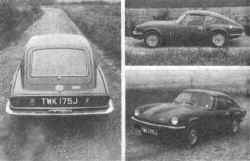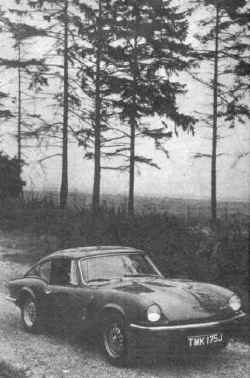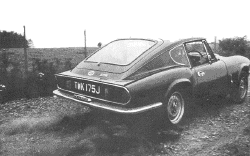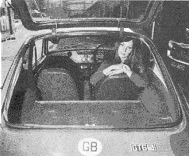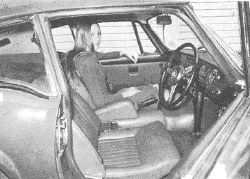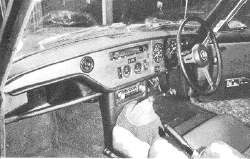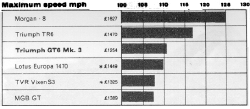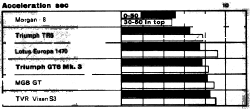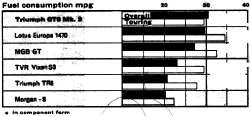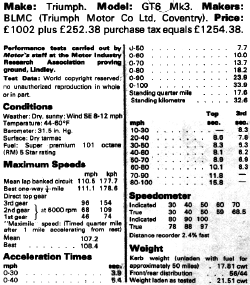Test
TRIUMPH GT6 MK 3
The
GT6 has been with us for five years and in that time it has undergone
considerable change. The most significant improvement appeared with the Mk
2, when the Herald-inspired swing axles were replaced by a semi-trailing
arm system. Also on the Mk 2 was an uprated engine, which provided a
useful increase in performance for very little sacrifice in economy.
'Re
Mk 3 appeared in October 1970, with many detailed refinements including
perforated disc wheels, flared arches on the front wings, the elimination
of the bonnet louvres as well as a reduction in the size of the
"power bulge". a windscreen deepened by 2in, anti-lift wipers,
and flush fitting door handles with anti-burst locks. The ventilation was
also improved by enlarging the intakes and outlets. The most obvious
alteration was to the tail, though, which inherited the now characteristic
Triumph recessed panel bordered by stainless steel strips, like that on
the Stag.
The
net bhp of the 1998 cc engine is now quoted as 98 bhp instead of 104. This
is not due to detuning, but to a revision of test conditions in the
laboratory. The output is in fact unchanged and gave a top speed of 110.5
mph. Our test car did not have overdrive and therefore sported the higher
3.27:1 axle to the resultant acceleration figures are thus slightly poorer
than those we recorded for the Mk 2 that did have overdrive. Even so the
performance is still very respectable, 0-60 mph taking 10.0 sec and the
quarter mile coming up in 17.6 sec.
Top
gear acceleration is also a bit poorer (inevitably) with the higher axle
ratio, 20-40 mph taking 8.6 sec instead of 6.6 sec. and 70-90 mph taking
11.8 sec. instead of 9.7 sec. 'Me maximum gear speeds indicate why it is
necessary to make full use of the gearbox for rapid cross country
journeys. First gear gives 46 mph, second 68 mph and third an incredible
96 mph. But despite the high gearing the engine, which is doing around
5000 rpm at 100 mph in top, gets rather fussed at speeds over 90 mph, and
does not therefore encourage high speed cruising.
Fuel consumption is where the GT6 scores over most of its rivals. At 40 mph it is doing almost 40 mpg and despite a lot of high-speed driving we managed a remark- able overall consumption of 30.5 mpg
.
